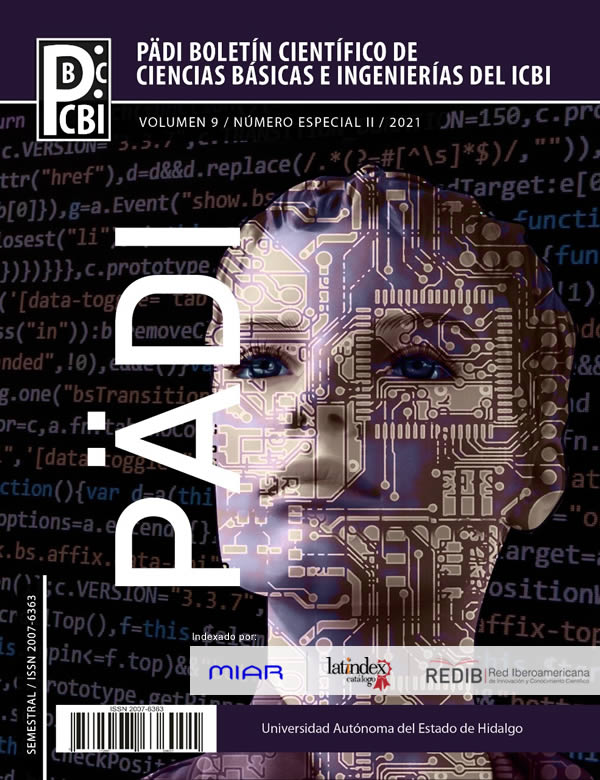Simulation of heat transfer in the spray dryer feed container and its temperature control
Abstract
Bioactive components from plant sources are often unstable against factors such as radiation and temperature changes, which implies that their conservation and management is a challenge. One method to stabilize these types of components is spray drying, which consists of sprinkling a liquid solution in a distributed manner in the drying chamber that circulates hot air, to eliminate the water and obtain a powder. The first control point is during the feeding of the equipment, since it must be kept in a temperature range or otherwise it could generate an unfavorable modification in the thermolabile components. The objective of the work was to predict from numerical calculations of the heat transfer in the feeding container of the drying system, the effect of the finite evaluation time, and the convective and conductive heat transfer coefficients on the thermal history, in addition of power supply requirements to maintain controlled temperature.
Downloads
References
Al-juhaimi, F., Ghafoor, K., Özcan, M. M., Jahurul, M. H. A., Babiker, E. E., Jinap, S., … Zaidul, I. S. M. (2018). Effect of various food processing and handling methods on preservation of natural antioxidants in fruits and vegetables. Journal of Food Science and Technology, 55(10), 3872–3880. https://doi.org/10.1007/s13197-018-3370-0
Angiolillo, L., Del Nobile, M. A., & Conte, A. (2015). The extraction of bioactive compounds from food residues using microwaves. Current Opinion in Food Science, 5, 93–98. https://doi.org/10.1016/j.cofs.2015.10.001
Dow, J. O. (1999). General Introduction. In J. O. Dow (Ed.), A Unified Approach to the Finite Element Method and Error Analysis Procedures (pp. xi–xxiv). Academic Press, Inc. https://doi.org/10.1016/B978-012221440-0/50028-5
Fang, Z., & Bhandari, B. (2017). Spray Drying of Bioactives. In Y. Roos & Y. Livney (Eds.), Engineering Foods for Bioactives Stability and Delivery (pp. 261–284). Springer, New York, NY. https://doi.org/10.1007/978-1-4939-6595-3_10
Hamzalioğlu, A., & Gökmen, V. (2016). Interaction between Bioactive Carbonyl Compounds and Asparagine and Impact on Acrylamide. InV. Gökmen (Ed.), Acrylamide in Food: Analysis, Content and Potential Health Effects (pp. 355–376). Academic Press, Inc. https://doi.org/10.1016/B978-0-12-802832-2.00018-8
Khoei, A. R. (2005). Error Estimation and Adaptivity. Computational Plasticity in Powder Forming Processes, 175–209. https://doi.org/10.1016/b978-008044636-3/50006-7
Liang, W., Zhao, J., Li, Y., & Zhai, Y. (2020). Research on the fractal characteristics and energy dissipation of basalt fiber reinforced concrete after exposure to elevated temperatures under impact loading. Materials, 13(8), 1902. https://doi.org/10.3390/MA13081902
MPC. (2021). Thermal Conductivity of Materials. https://doi.org/https://material-properties.org/thermal-conductivity-of-materials/
Ortega, A., & Juan Rosales, J. (2018). Newton’s law of cooling with fractional conformable derivative. Revista Mexicana de Fisica, 64(2), 172–175. https://doi.org/10.31349/revmexfis.64.172
Papalia, T., Sidari, R., & Panuccio, M. R. (2019). Impact of Different Storage Methods on Bioactive Compounds in Arthrospira platensis Biomass. Molecules, 24, 2810. https://doi.org/10.3390/molecules24152810
Rivas, J. C., Cabral, L. M. C., & Rocha-Leão, M. H. (2020). Stability of Bioactive Compounds of Microencapsulated Mango and Passion Fruit Mixed Pulp. International Journal of Fruit Science, 20(S2), S94–S110. https://doi.org/10.1080/15538362.2019.1707746
Santos, D., Maurício, A. C., Sencadas, V., Santos, J. D., Fernandes, M. H., & Gomes, P. S. (2017). Spray Drying: An Overview. In R. Pignatello (Ed.), Biomaterials - Physics and Chemistry - New Edition (pp. 9–35). IntechOpen. https://doi.org/10.5772/intechopen.72247
Singh, R. P., & Heldman, D. R. (2009). Introduction to Food Engineering. (R. P. Singh & D. R. Heldman, Eds.) (4th ed.). Elsevier Inc.
Sridhar, K., Inbaraj, B. S., & Chen, B.-H. (2021). Recent Advances on Nanoparticle Based Strategies for Improving Carotenoid Stability and Biological Activity. Antioxidants, 10(5), 713. https://doi.org/10.3390/antiox10050713
Tran, T. T. A., & V.H. Nguyen, H. (2018). Effects of Spray-Drying Temperatures and Carriers on Physical and Antioxidant Properties of Lemongrass Leaf Extract Powder. Beverages, 4(4), 84. https://doi.org/10.3390/beverages4040084












